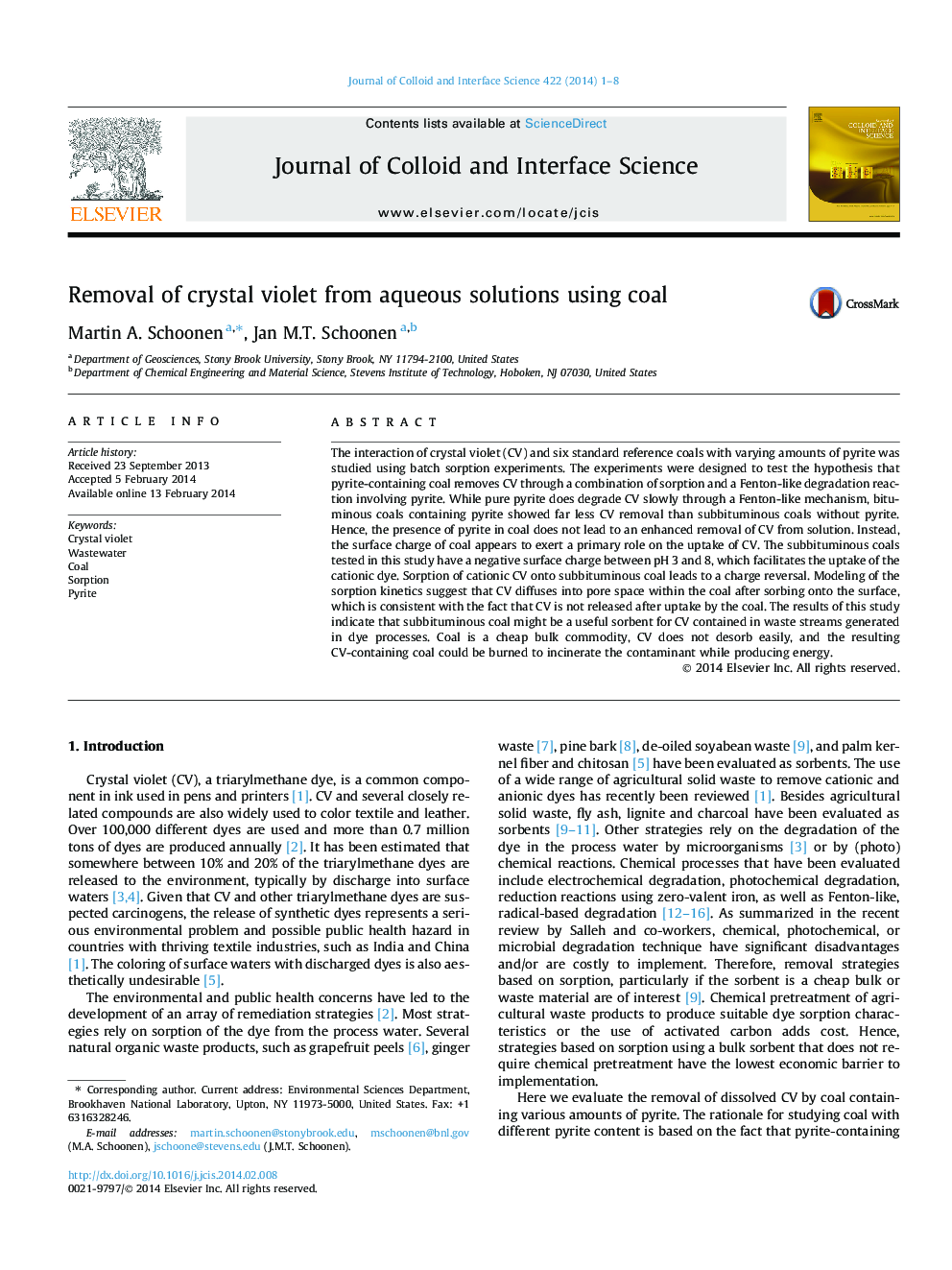| کد مقاله | کد نشریه | سال انتشار | مقاله انگلیسی | نسخه تمام متن |
|---|---|---|---|---|
| 607260 | 1454573 | 2014 | 8 صفحه PDF | دانلود رایگان |
• Compared the removal of crystal violet from solution by 6 coals standards.
• Subbituminous coals are far more efficient than bituminous coals.
• Removal is governed by surface charge, not presence of pyrite.
• Uptake mechanism is surface sorption followed by intra-particle diffusion.
• Uptake is irreversible compared to many other sorbents that have been considered.
The interaction of crystal violet (CV) and six standard reference coals with varying amounts of pyrite was studied using batch sorption experiments. The experiments were designed to test the hypothesis that pyrite-containing coal removes CV through a combination of sorption and a Fenton-like degradation reaction involving pyrite. While pure pyrite does degrade CV slowly through a Fenton-like mechanism, bituminous coals containing pyrite showed far less CV removal than subbituminous coals without pyrite. Hence, the presence of pyrite in coal does not lead to an enhanced removal of CV from solution. Instead, the surface charge of coal appears to exert a primary role on the uptake of CV. The subbituminous coals tested in this study have a negative surface charge between pH 3 and 8, which facilitates the uptake of the cationic dye. Sorption of cationic CV onto subbituminous coal leads to a charge reversal. Modeling of the sorption kinetics suggest that CV diffuses into pore space within the coal after sorbing onto the surface, which is consistent with the fact that CV is not released after uptake by the coal. The results of this study indicate that subbituminous coal might be a useful sorbent for CV contained in waste streams generated in dye processes. Coal is a cheap bulk commodity, CV does not desorb easily, and the resulting CV-containing coal could be burned to incinerate the contaminant while producing energy.
Figure optionsDownload high-quality image (12 K)Download as PowerPoint slide
Journal: Journal of Colloid and Interface Science - Volume 422, 15 May 2014, Pages 1–8
